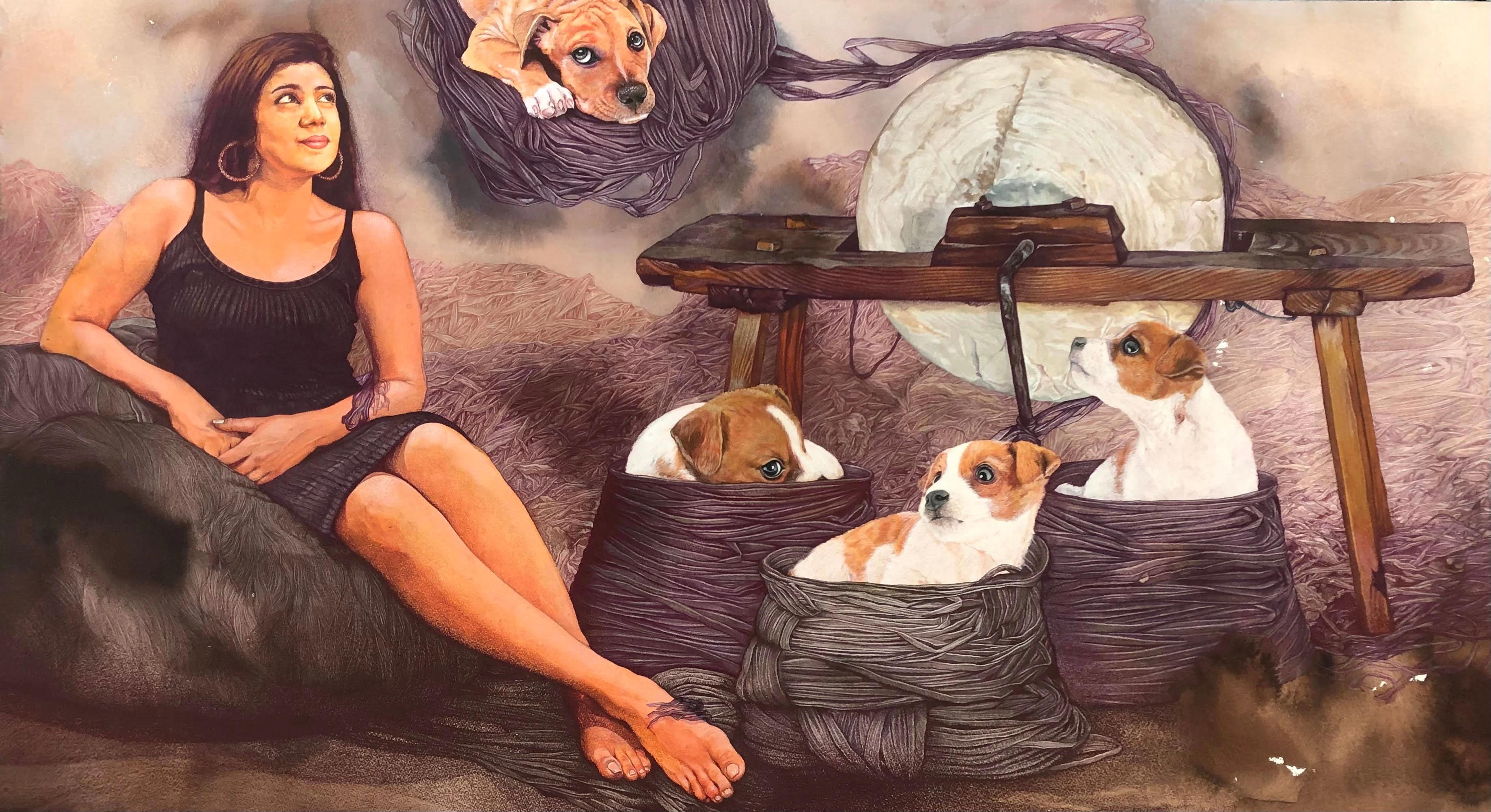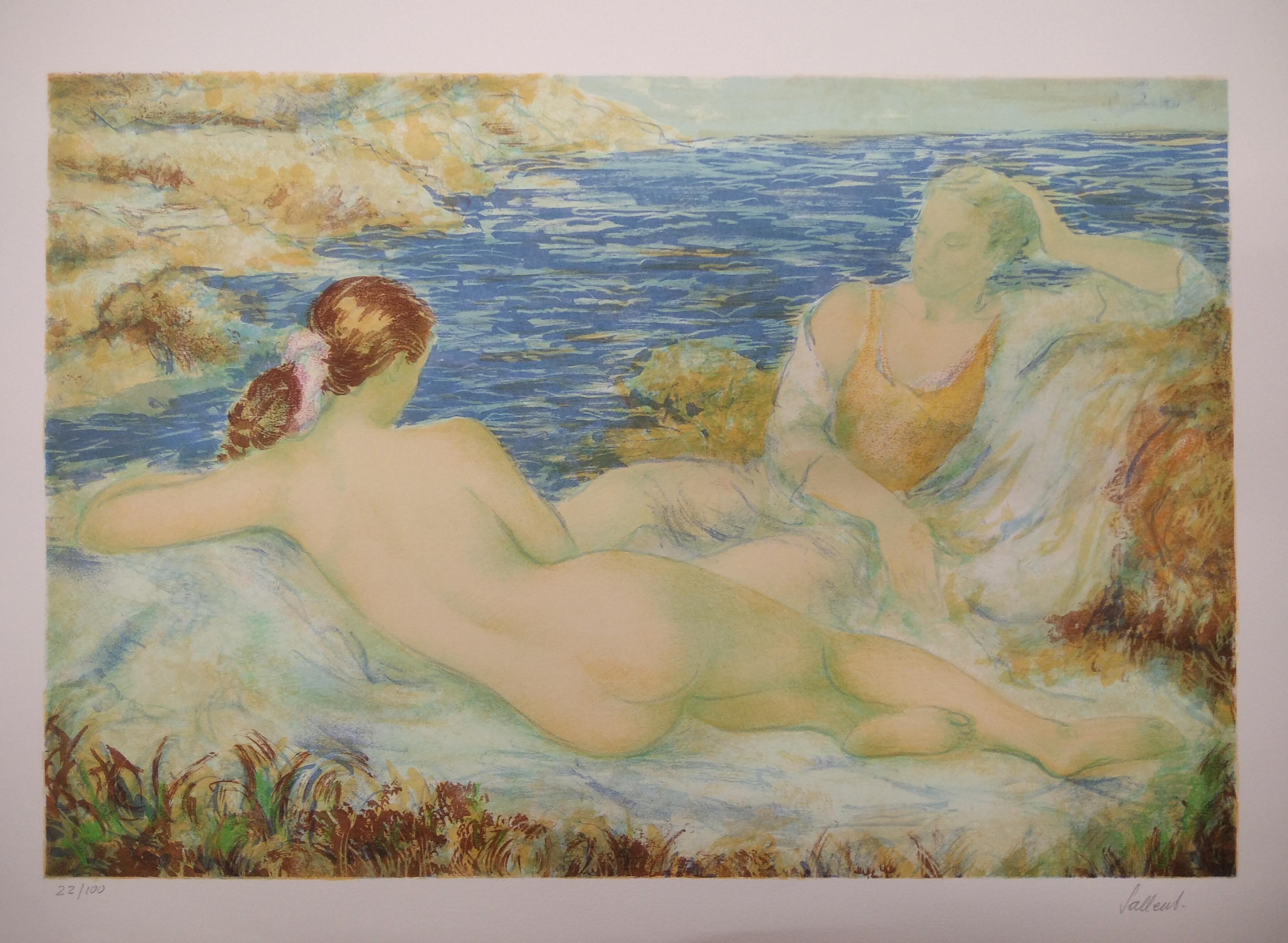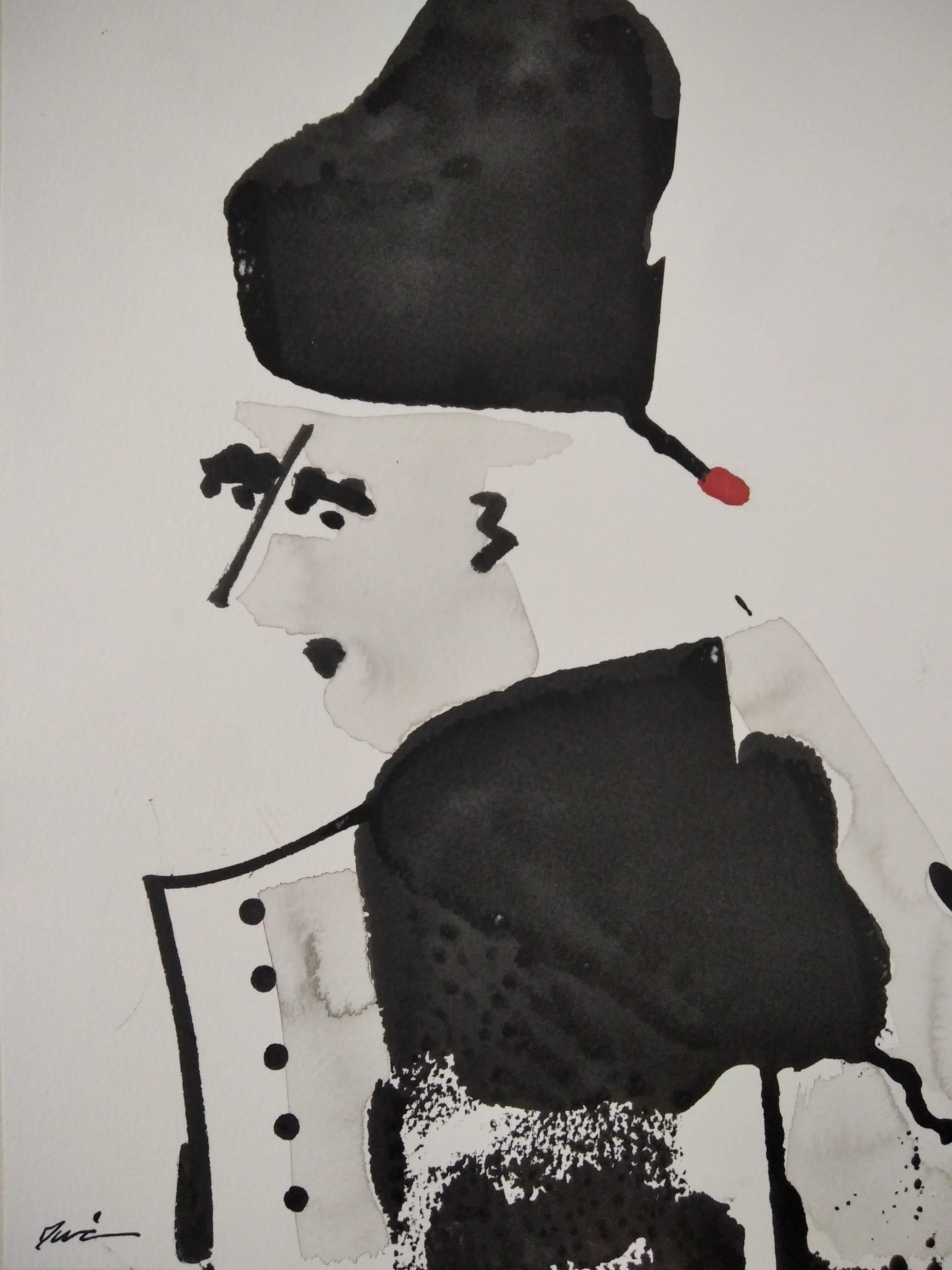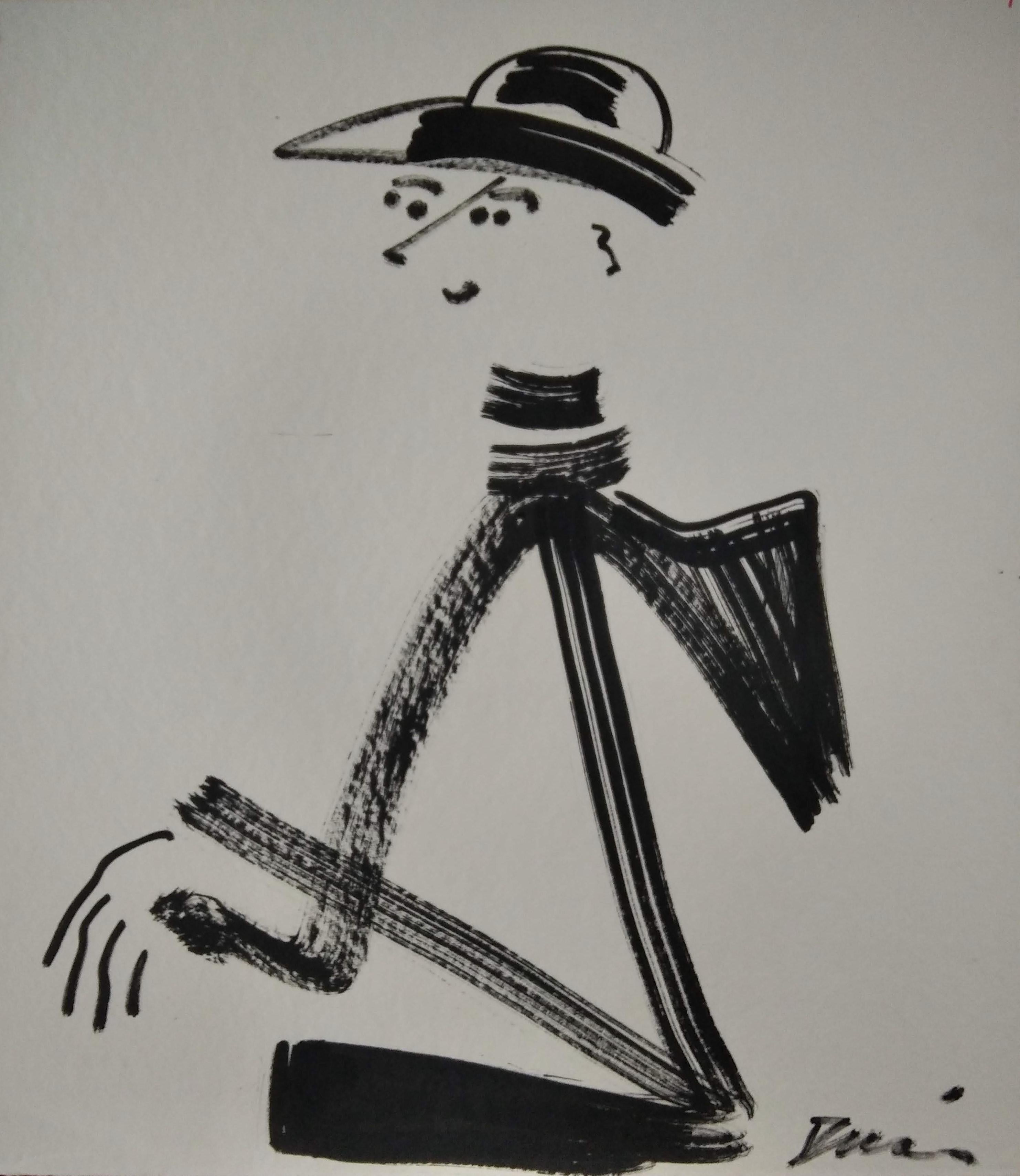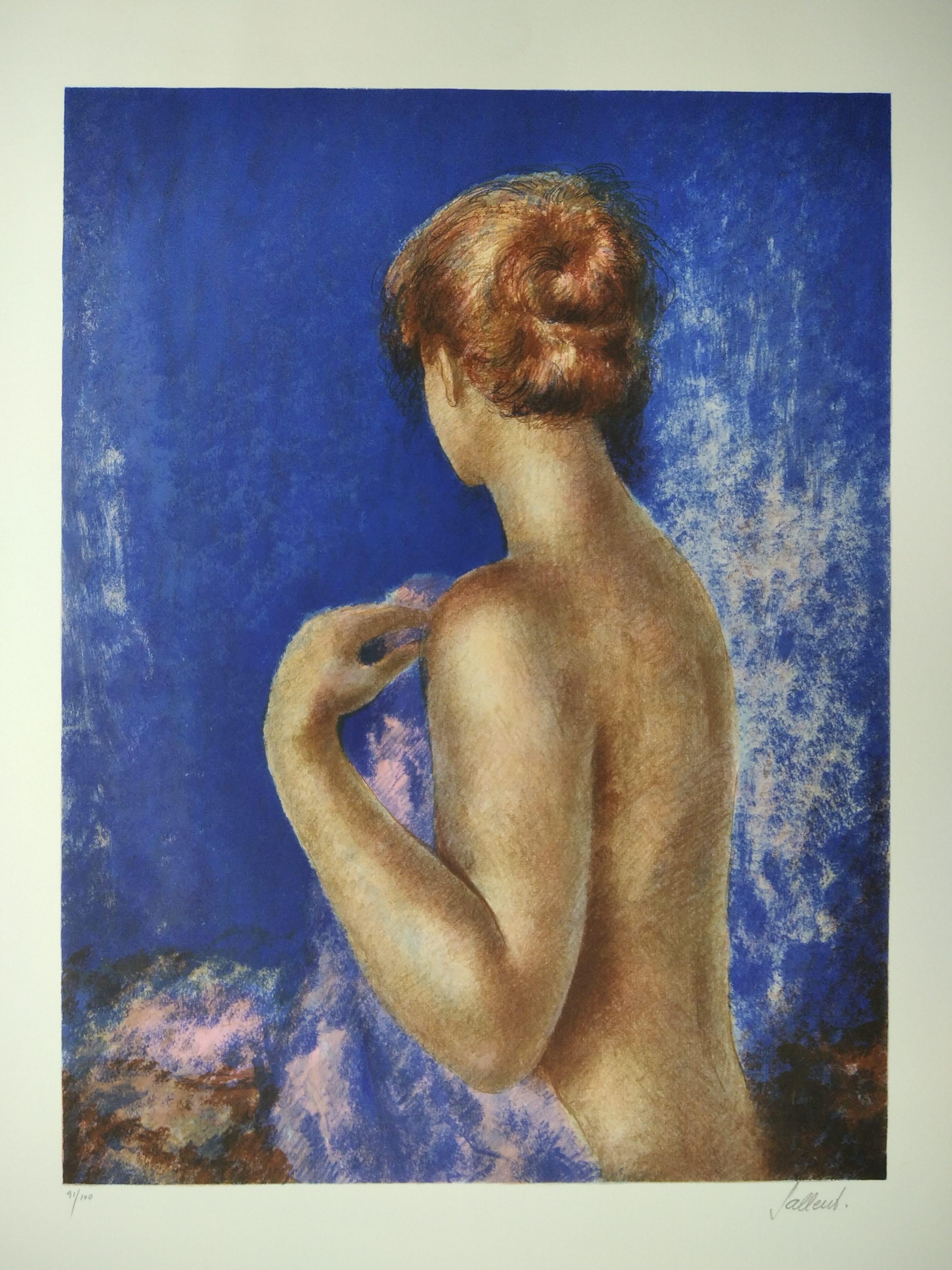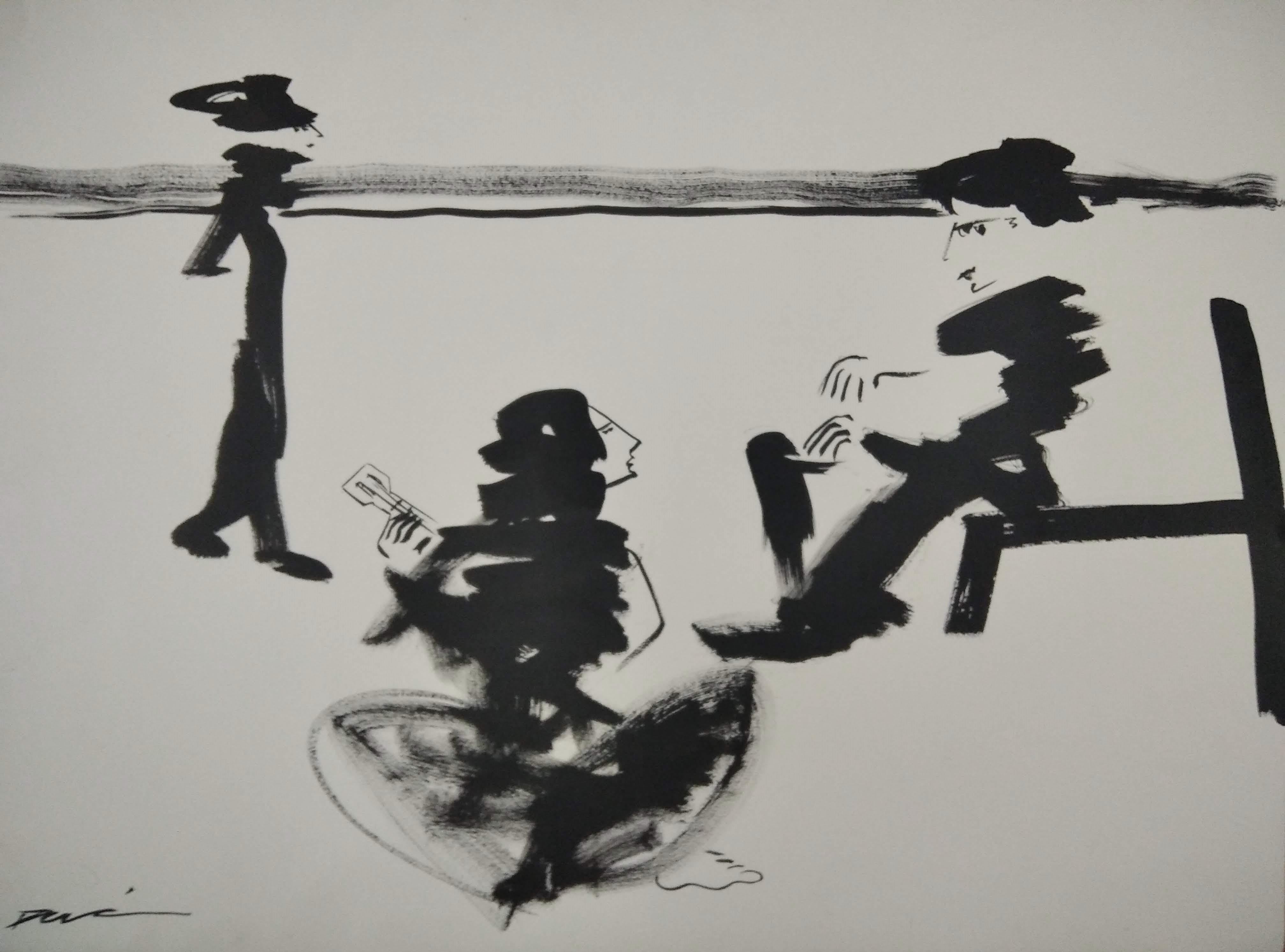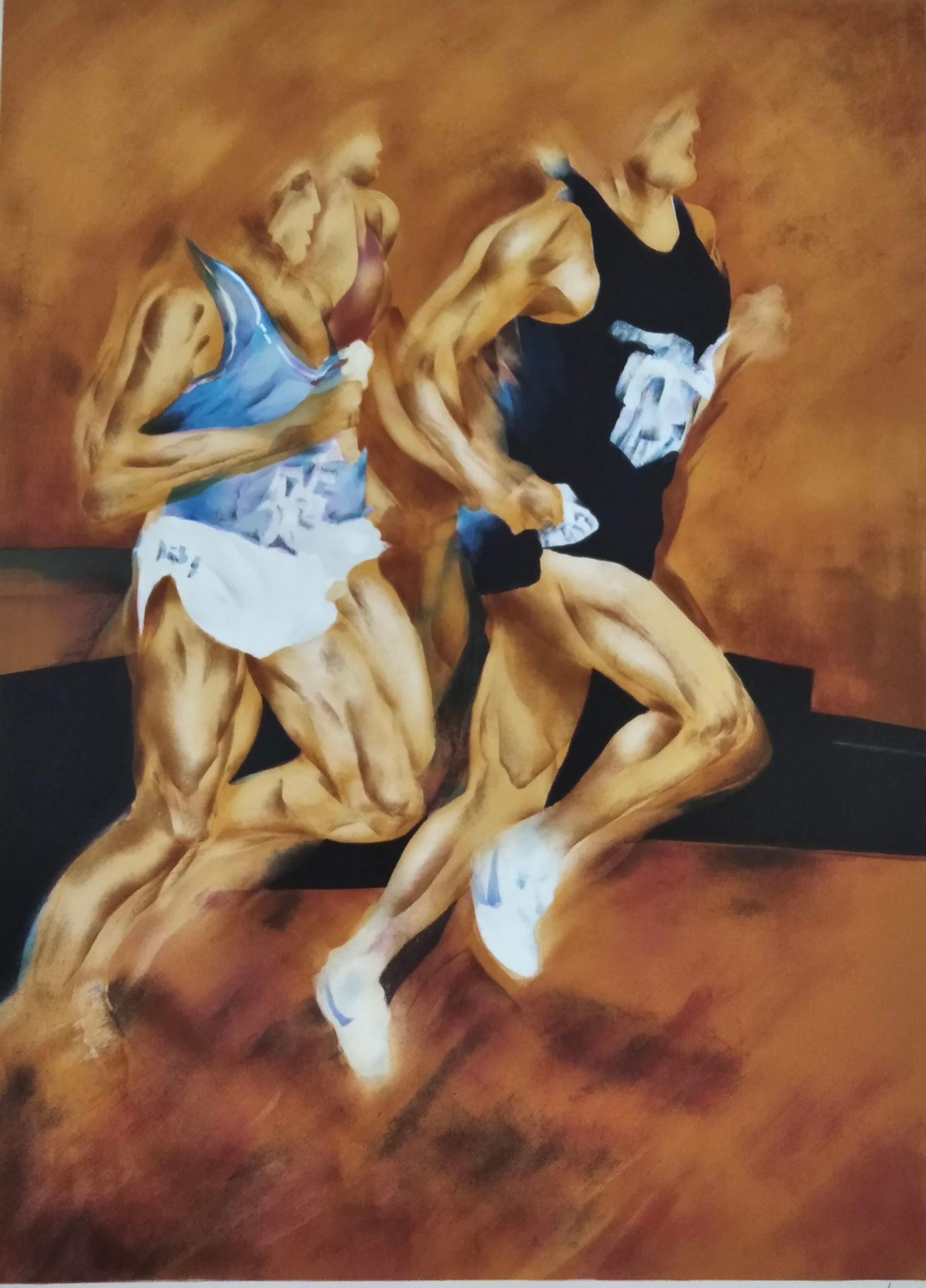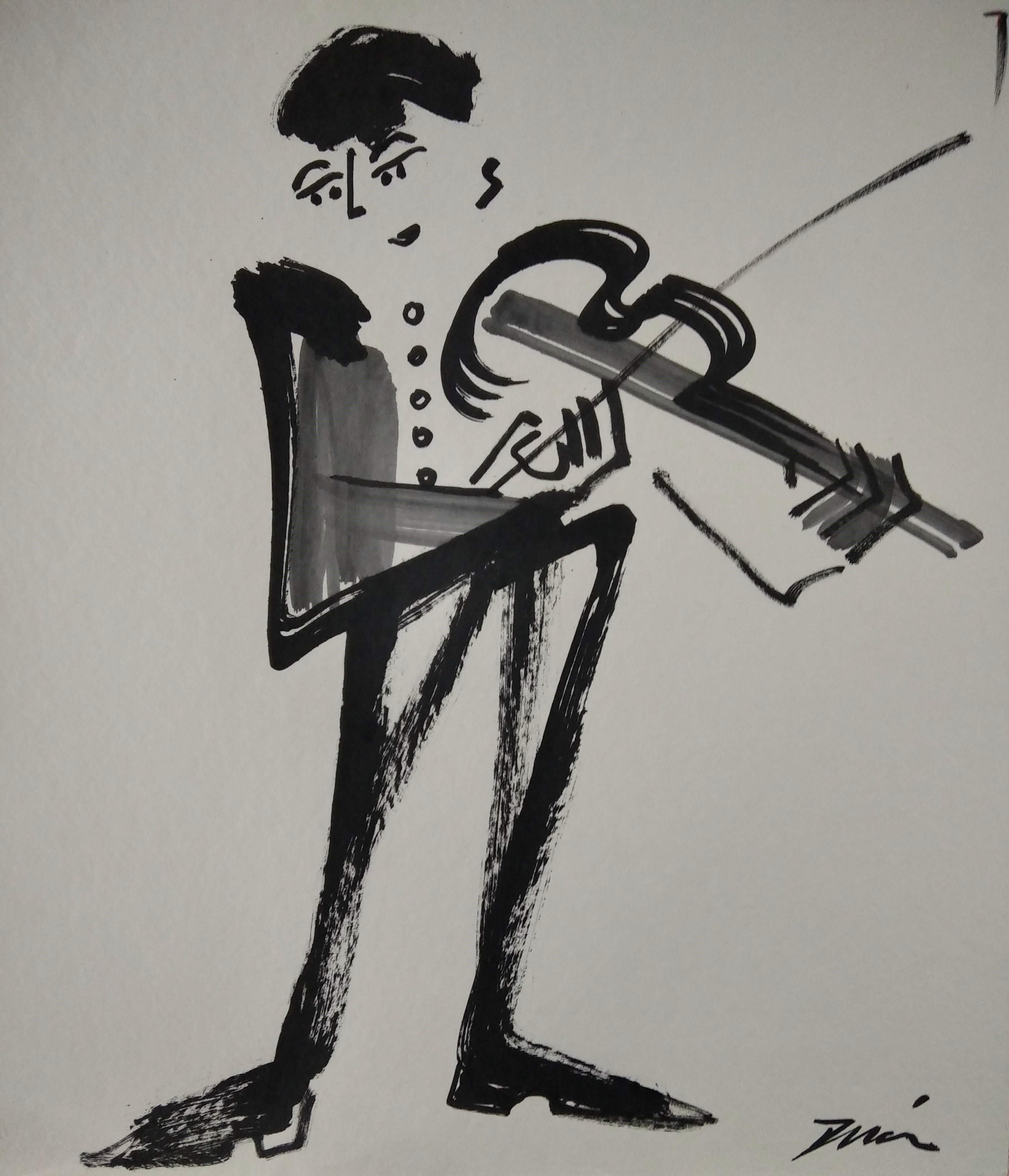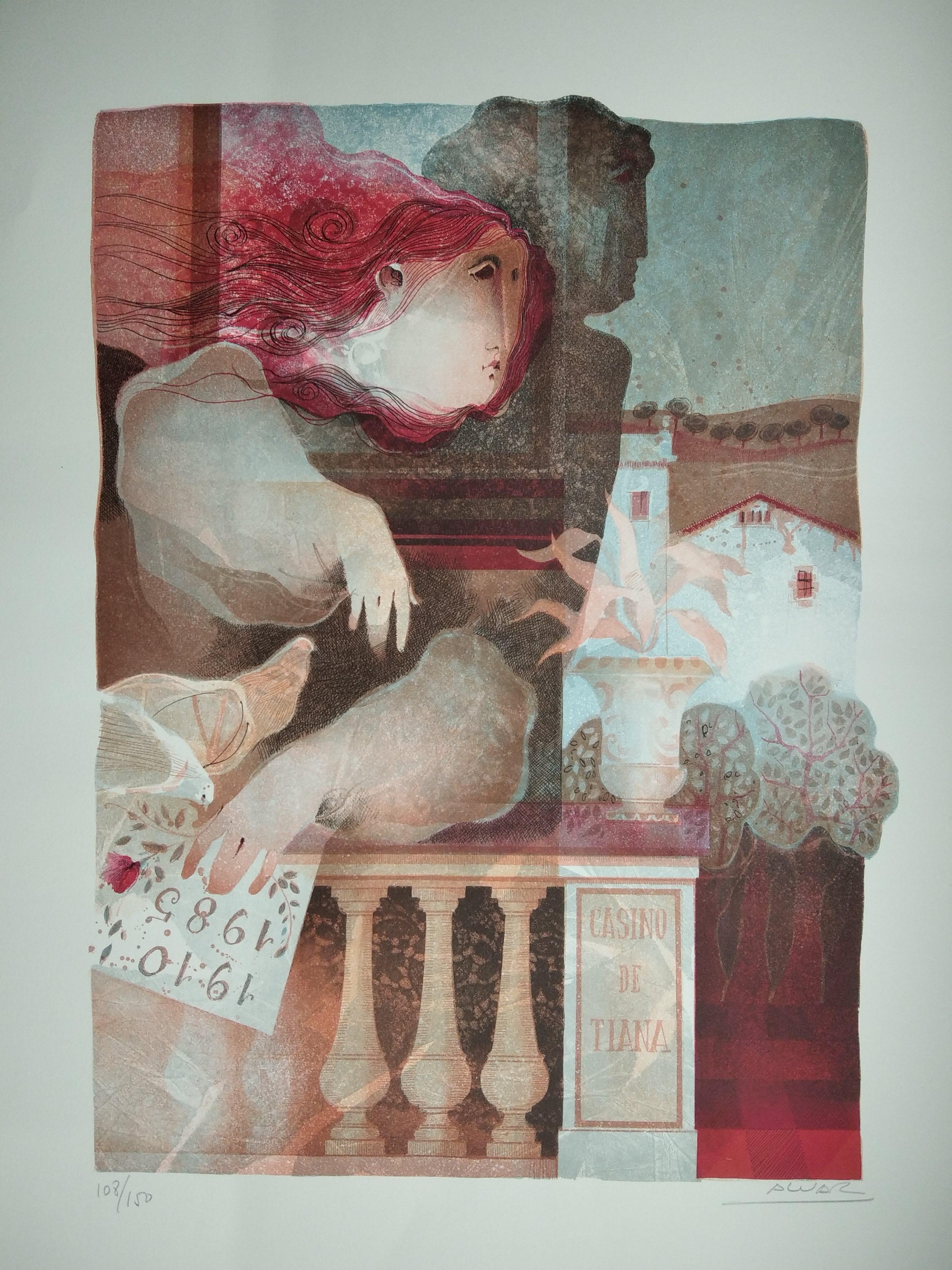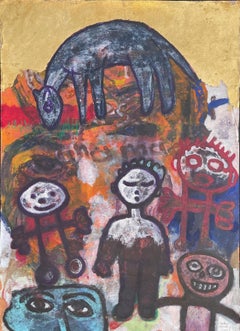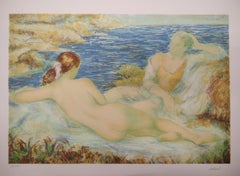
Perfect Service (La Bonne Table illustration)
View Similar Items
Want more images or videos?
Request additional images or videos from the seller
1 of 16
Ludwig Bemelmans, 1898-1962Perfect Service (La Bonne Table illustration)ca. 1950
ca. 1950
Price:$15,000
$50,000List Price
About the Item
- Creator:Ludwig Bemelmans, 1898-1962 (1898 - 1962, American)
- Creation Year:ca. 1950
- Dimensions:Height: 19 in (48.26 cm)Width: 24 in (60.96 cm)
- Medium:
- Period:
- Framing:Framing Options Available
- Condition:
- Gallery Location:Wilton Manors, FL
- Reference Number:1stDibs: LU24527188282
About the Seller
4.9
Platinum Seller
Premium sellers with a 4.7+ rating and 24-hour response times
Established in 2007
1stDibs seller since 2015
412 sales on 1stDibs
Typical response time: 2 hours
Authenticity Guarantee
In the unlikely event there’s an issue with an item’s authenticity, contact us within 1 year for a full refund. DetailsMoney-Back Guarantee
If your item is not as described, is damaged in transit, or does not arrive, contact us within 7 days for a full refund. Details24-Hour Cancellation
You have a 24-hour grace period in which to reconsider your purchase, with no questions asked.Vetted Professional Sellers
Our world-class sellers must adhere to strict standards for service and quality, maintaining the integrity of our listings.Price-Match Guarantee
If you find that a seller listed the same item for a lower price elsewhere, we’ll match it.Trusted Global Delivery
Our best-in-class carrier network provides specialized shipping options worldwide, including custom delivery.More From This Seller
View AllSame Old Story (Brooklyn Dodgers & St. Louis Cardinals Illustration)
Located in Wilton Manors, FL
Bill Crawford (1913-1982). Original illustration artwork depicting teams as they advance to the World Series. Depicted are representations of the St. Louis Cardinals and The Brooklyn...
Category
1940s Realist Figurative Paintings
Materials
Paper, Charcoal, Ink, Gouache, Pencil
Untitled Modernist (Abstract Expressionist Figurative Painting)
Located in Wilton Manors, FL
Beautiful Abstract expressionist figure signed Kline. Charcoal on paper measuring 10 x 13 inches. Sheet is glued down to foam board backing. Total measurement 13 x 16 inches.
Category
Mid-20th Century Abstract Expressionist Abstract Drawings and Watercolors
Materials
Paper, Ink
Leprechaun Irish Greeting Card painting (Children's room decor)
Located in Wilton Manors, FL
Ferd Sondern (b.1923)
Legend of Leprechaun, 1980.
Ink and watercolor on illustration board. Complete panel measures 10.5 x 18 inches.
Signed in rock at right side of stream. Cred...
Category
1970s Realist Animal Paintings
Materials
Watercolor, Illustration Board, Ink
Christmas Toys Greeting Card painting (Children's room decor)
Located in Wilton Manors, FL
Ferd Sondern (b.1923)
Christmas Toys, 1978.
Ink and watercolor on illustration board. Complete panel measures 10 x 18 inches.
Signed lower left. Credited on verso.
Printer nota...
Category
1970s Realist Animal Paintings
Materials
Ink, Watercolor, Illustration Board, Gouache
Coronel Retirado y Su Amante Esposa (Cuban Artist)
By Felipe Orlando
Located in Wilton Manors, FL
Felipe Orlando (Cuban-Mexican, 1911-2001). Coronel Retirado y su Amante Esposa, ca. 1970. Ink and gouache on paper with heavily built up layers of textured ground. Measures 13 1/4 x 18 3/8 inches. Signed lower left. Original label affixed on verso. Excellent condition. Unframed.
An anthropologist as well as a painter and engraver, Orlando, whose full name was Felipe Orlando Garcia Murciano, studied at the University of Havana and at the painting workshop of Jorge Arche and Víctor Manuel. He was a founding member of the Asociación de Pintores y Escultores de Cuba (APEC) and a professor at the Universidad de las Américas and the Universidad Nacional Autónoma de México, both in Mexico City. His style is influenced by the Afro-Cuban movement and pre-columbian art...
Category
1970s Abstract Abstract Paintings
Materials
Ink, Gouache
Fancy Department Store Satirical Cartoon
Located in Wilton Manors, FL
Barbara Shermund (1899-1978). Fancy Department Store Satirical Cartoon, ca. 1930's. Ink, watercolor and gouache on heavy illustration paper, panel measures 19 x 15 inches. Signed lower right. Very good condition. Unframed.
Provenance: Ethel Maud Mott Herman, artist (1883-1984), West Orange NJ.
For two decades, she drew almost 600 cartoons for The New Yorker with female characters that commented on life with wit, intelligence and irony.
In the mid-1920s, Harold Ross, the founder of a new magazine called The New Yorker, was looking for cartoonists who could create sardonic, highbrow illustrations accompanied by witty captions that would function as social critiques.
He found that talent in Barbara Shermund.
For about two decades, until the 1940s, Shermund helped Ross and his first art editor, Rea Irvin, realize their vision by contributing almost 600 cartoons and sassy captions with a fresh, feminist voice.
Her cartoons commented on life with wit, intelligence and irony, using female characters who critiqued the patriarchy and celebrated speakeasies, cafes, spunky women and leisure. They spoke directly to flapper women of the era who defied convention with a new sense of political, social and economic independence.
“Shermund’s women spoke their minds about sex, marriage and society; smoked cigarettes and drank; and poked fun at everything in an era when it was not common to see young women doing so,” Caitlin A. McGurk wrote in 2020 for the Art Students League.
In one Shermund cartoon, published in The New Yorker in 1928, two forlorn women sit and chat on couches. “Yeah,” one says, “I guess the best thing to do is to just get married and forget about love.”
“While for many, the idea of a New Yorker cartoon conjures a highbrow, dry non sequitur — often more alienating than familiar — Shermund’s cartoons are the antithesis,” wrote McGurk, who is an associate curator and assistant professor at Ohio State University’s Billy Ireland Cartoon Library & Museum. “They are about human nature, relationships, youth and age.” (McGurk is writing a book about Shermund.
And yet by the 1940s and ’50s, as America’s postwar focus shifted to domestic life, Shermund’s feminist voice and cool critique of society fell out of vogue. Her last cartoon appeared in The New Yorker in 1944, and much of her life and career after that remains unclear. No major newspaper wrote about her death in 1978 — The New York Times was on strike then, along with The Daily News and The New York Post — and her ashes sat in a New Jersey funeral home...
Category
1930s Realist Figurative Paintings
Materials
Gouache, Ink
$1,875 Sale Price
25% Off
You May Also Like
Caballo y Personajes (Horse and Characters)
Located in San Francisco, CA
Gabriel Mendoza
Caballo y Personajes (Horse and Characters), 2022
Acrylic, ink and gold leaf on paper
Unframed dimensions: 29.75 x 22 inches
Framed dimensions: 39 x 27 inches
This o...
Category
21st Century and Contemporary Contemporary Animal Paintings
Materials
Gold Leaf
"The Hunt" Figurative Painting 13" x 20.5" inch by Ahmed Saber
By Ahmed Saber
Located in Culver City, CA
"The Hunt" Figurative Painting 13" x 20.5" inch by Ahmed Saber
Medium: acrylic, ink & colored pencil on paper
AHMED SABER - BIO
Ahmed Saber is an Egyptian artist based in Luxor in ...
Category
21st Century and Contemporary Symbolist Figurative Paintings
Materials
Paper, Ink, Acrylic, Color Pencil
"Loyalty" Figurative Painting 31.5" x 55" inch by Ahmed Saber
By Ahmed Saber
Located in Culver City, CA
"Loyalty" Figurative Painting 31.5" x 55" inch by Ahmed Saber
Medium: ink & colored pens on paper
AHMED SABER - BIO
Ahmed Saber is an Egyptian artist based in Luxor in Upper Egypt,...
Category
21st Century and Contemporary Symbolist Figurative Paintings
Materials
Paper, Ink, Color Pencil
Untitled
Located in Barcelona, BARCELONA
The painting is being offered with a work and authenticity certificate
Category
Early 2000s Impressionist Figurative Paintings
Materials
Paper, Ink, Lithograph
Untitled
Located in Barcelona, BARCELONA
The painting is being offered with a work and authenticity certificate
Category
2010s Figurative Paintings
Materials
Paper, Ink
Untitled
Located in Barcelona, BARCELONA
The painting is being offered with a work and authenticity certificate
Category
2010s Modern Figurative Paintings
Materials
Paper, Ink
Recently Viewed
View AllMore Ways To Browse
Paris Ritz Tables
Viking Painting
Rabbit Vintage Drawing
Gramercy Park
Old Vintage Dinner Plates
Vintage School Map
Vintage Tyrolean
Man With Feather Hat
Vintage Circus Collectibles
French Empire Tea Set
Feathered Lampshade
Manuscript Box
Vintage Circus Dresses
Hospital Bed
Vintage French Menus
Empire Tea Service
Viking Table
Vintage Champagne Wall Art


